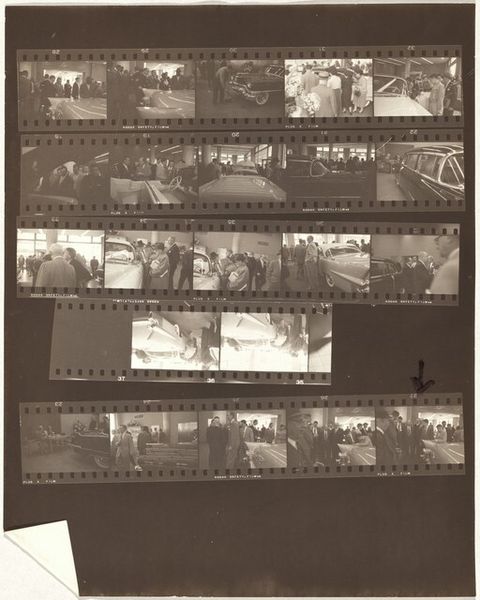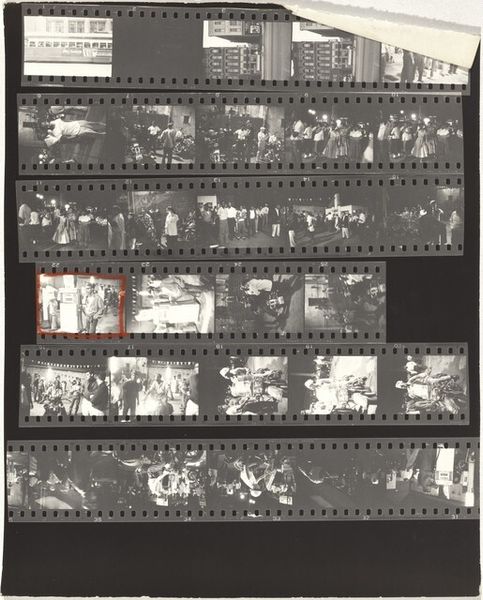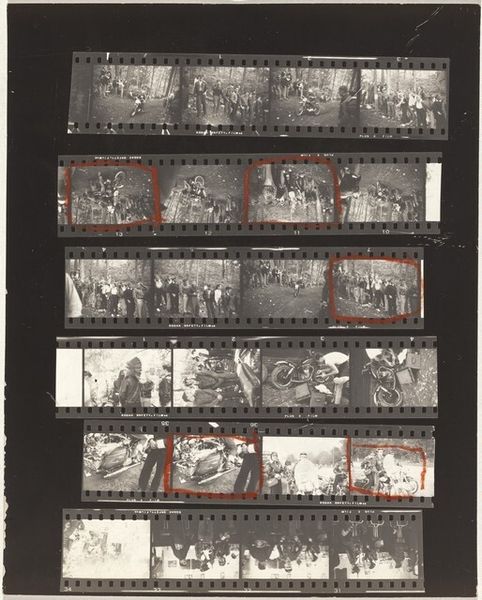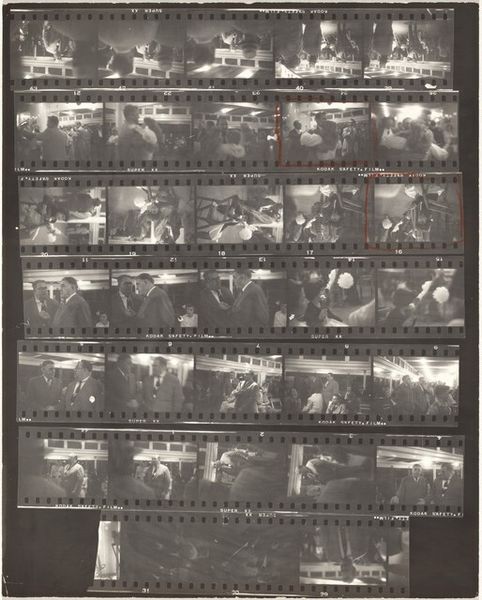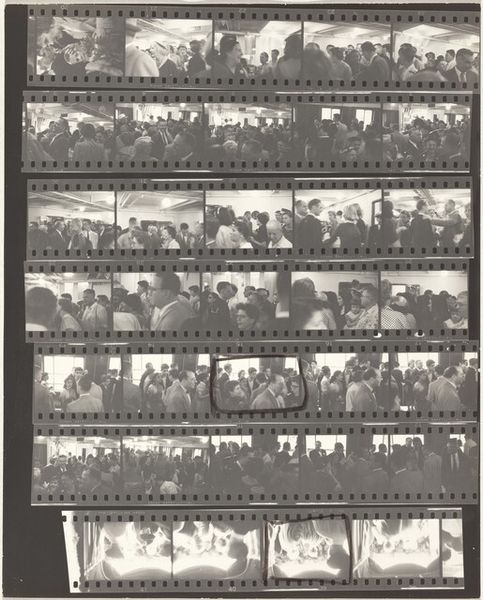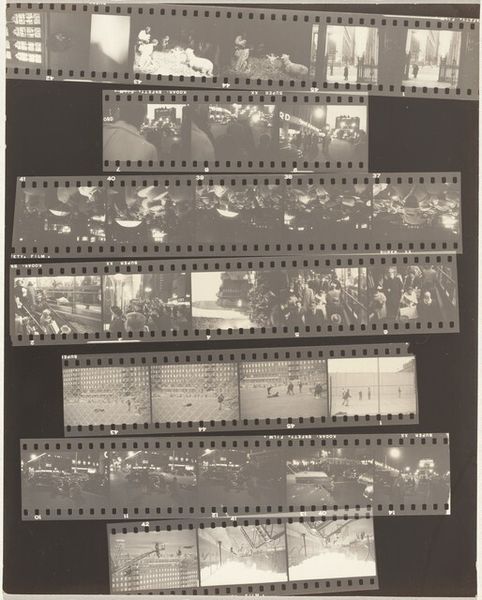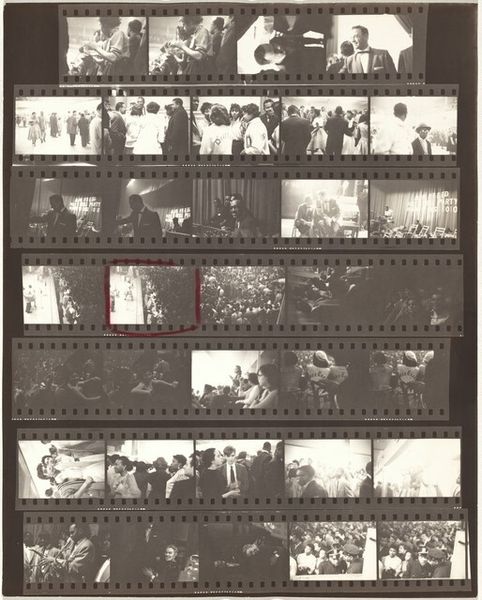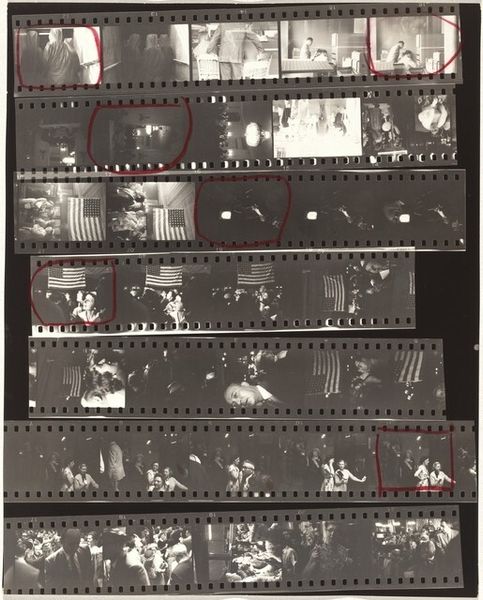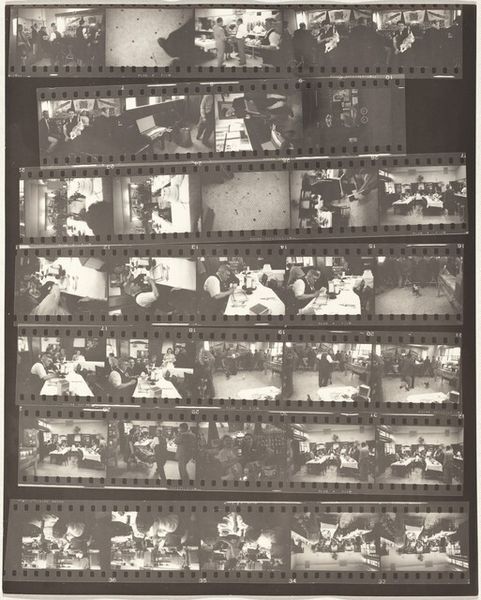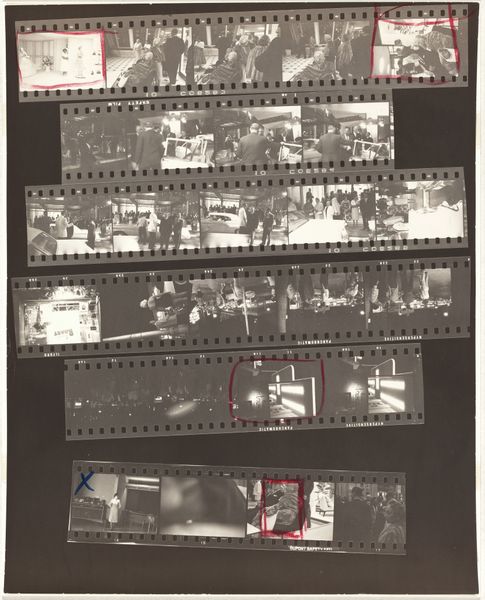
Dimensions: sheet: 25.2 x 20.1 cm (9 15/16 x 7 15/16 in.)
Copyright: National Gallery of Art: CC0 1.0
Editor: Here we have Robert Frank's gelatin silver print, "Family of Man Opening – Museum of Modern Art 3," from 1955. It's essentially strips of film, contact sheets documenting what seems to be the opening of an exhibition. What can you tell us about the cultural significance of this piece, beyond it just being a historical document? Curator: It’s fascinating, isn't it? Frank, known for his gritty, outsider perspective on America, captures a seemingly celebratory event: the opening of the "Family of Man" exhibition. The exhibition itself was a massive, hugely popular and, controversially, a very humanistic, Cold War-era project that tried to convey a sense of global unity. Frank's perspective subverts that. Editor: How so? It just looks like crowds at an opening. Curator: Exactly! He gives us the crowd *looking* at the art. We see the backs of heads, clusters of people, moments of disconnect, not the supposedly unifying art itself. He critiques the spectacle, the ritual of art consumption itself. The museum becomes a social stage. Think about the institutional power MoMA held, what did it *mean* to be seen at a MoMA show in 1955? Editor: It sounds like he is questioning not just the exhibition's message but MoMA's authority? Curator: Precisely! He's making us question the act of viewing and participating in the art world. Is it about genuine connection, or is it about performative engagement? That tension is something Frank explores continually in his work. It forces us to think about the museum as more than just a neutral space, but a space with social and political weight. Editor: That's a completely different way to view this piece than I initially imagined. I saw documentation; you see a critique. It makes you wonder who we are performing for, even at an art gallery. Curator: Yes! That’s the beauty of looking through a historical lens. You start seeing how art participates in and reflects the complexities of power.
Comments
No comments
Be the first to comment and join the conversation on the ultimate creative platform.
